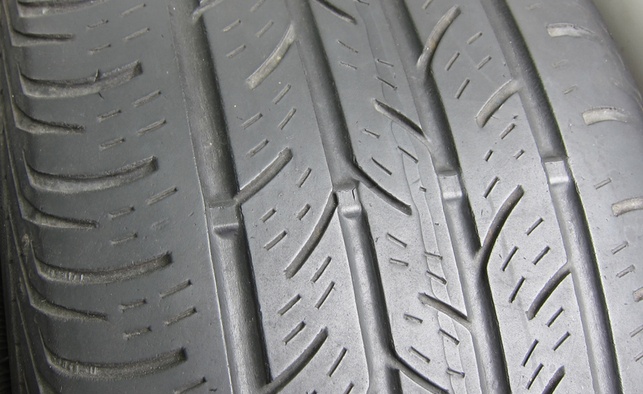Adequate tread depth helps car maintain a stable grip on the road especially in rainy or snowy weather conditions. It plays a very important role in car safety. Car tire wear bars are designed to offer a visual indication of the degree of tire wear. By simply looking at them, you can know for sure whether it is the time for tire replacement.
How Wear Bars Act as a Tread Wear Indicator
Tread depth is measured in 32nds of an inch. A typical tire starts out with a tread depth of around 10/32″. If a tire’s tread is worn down to 2/32″, it could put you in a dangerous situation and must be replaced immediately. In fact, 2/32″ is the legal minimum tread depth in most states and any tires worn more than that are illegal. Because of this, Federal Motor Vehicle Safety Standards (FMVSS) require that tires be manufactured with tire wear bars. Most tires have at least six or more tread wear bars. Some small tires (12-inch rim or smaller) only require a minimum of three tread wear indicators.
Each tire wear indicator on a tire provides a visual indication of whether the tread is worn to 2/32″. When you visually inspect one of your tires, find a tire wear bar and see if it is flush with the rest of the tire’s tread. If so, your tire is worn to 2/32″, and you need to replace it as soon as possible.
Why Tread Depth Matters
Your tire’s tread is what lets it grip the road and help prevent your vehicle from losing traction, especially on wet or icy roads. A tire has grooves that help channel water out from below it when the road is wet. This helps you maintain control of your vehicle when it rains. But a tire’s tread gradually wears away over time, and grooves can’t channel water away as effectively when they wear down.
If your tires are worn down to the tire wear indicators, it can take you much longer to come to a stop on slick roads. You may be at a higher risk of hydroplaning too, which can lead to an accident.
Other Tire Wear Indicator Methods
A tire’s built-in tread wear indicator bars are just one way to identify how much tread is remaining. You can also use a quarter. Take your quarter, turn Washington upside down, and insert him head first into one of the grooves on your tire. If you can see the top of his head, you should get new tires. Be sure the quarter isn’t hitting a tread wear bar. Some people used to recommend using a penny for the same purpose, but pennies may not be the best tread indicator. If you are going to use a coin, a quarter is your best bet.
There aren’t many tread indicators that can beat the accuracy of a tread depth gauge. You can find a variety of tread depth gauges for sale online that will give you the true measurement of your tread depth in 32nds of an inch. Digital tread depth gauges make it even easier by showing you the measurement on a display, helping avoid any human error in reading the gauge. If you don’t have a tread depth gauge handy, you can also visit your local dealership. The trained technicians there can give you a professional tire inspection.

Tire wear visual indicator: tire wear bars
by
Tags:
